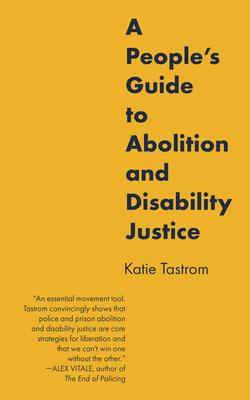Disability justice and prison abolition are two increasingly
popular theories that overlap but whose intersection has rarely been
explored in depth.
A People's Guide to Abolition and Disability Justice explains
the history and theories behind abolition and disability justice in a
way that is easy to understand for those new to these concepts yet also
gives insights that will be useful to seasoned activists. The book uses
extensive research and professional and lived experience to illuminate
the way the State uses disability and its power to disable to
incarcerate multiply marginalized disabled people, especially those who
are queer, trans, Black, or Indigenous.
Because disabled people are much more likely than nondisabled people to
be locked up in prisons, jails, and other sites of incarceration,
abolitionists, and others critical of carceral systems must incorporate a
disability justice perspective into our work. A People's Guide to Abolition and Disability Justice gives
personal and policy examples of how and why disabled people are
disproportionately caught up in the carceral net, and how we can use
this information to work toward prison and police abolition more
effectively. This book includes practical tools and strategies that will
be useful for anyone who cares about disability justice or abolition
and explains why we can't have one without the other.
